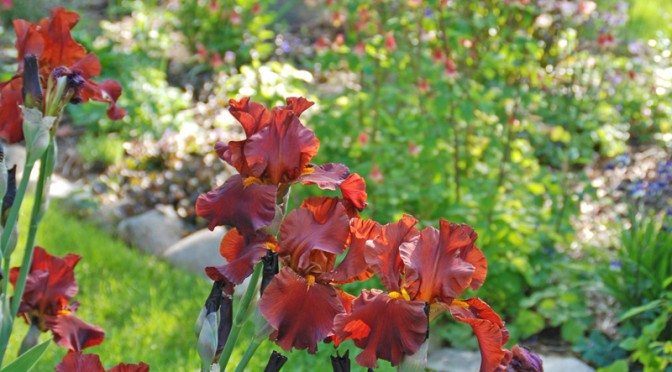by Melinda Myers
Spring is here and the garden centers are filled with beautiful plants. Many of us are making our way to one or more of our favorite garden shops. We leave with a car full of beautiful flowers and healthy vegetables with hopes of a bountiful harvest.
But before that first plant goes into the ground, make sure your soil is properly prepared. Though not the most glamorous part of gardening, it is the first and most important step in creating a beautiful and productive garden.
Start by adding some compost, aged manure or a garden soil labeled for flowers and vegetables to this year’s shopping list.  You’ll need about two 2-cubic-ft bags of soil additive to cover 25 square feet of garden two inches deep. Calculate your garden size by measuring the length times the width, so you are sure to purchase all you need.
Once the car is unloaded the fun begins. Work the soil when it is moist, but not wet. A simple test can help with this. Grab a handful of soil and gently squeeze. Then gently tap it with your finger. If it breaks into smaller pieces, it is ready to work. If it stays in a wet ball, wait for the soil to dry slightly before digging in. Otherwise you will compact the soil, reduce drainage and create clods and crusty soil that you’ll be fighting all season long.
Start by digging several inches of compost, aged manure, or a product like Schultz garden soil for flowers and vegetables into the top 12 inches of soil. These materials improve drainage in heavy clay soils and increase water-holding ability in sandy soils.
Spread the organic matter over the soil surface of the garden bed. Use a shovel or rototiller to blend the organic matter into the soil. Rake the area smooth and level or make a slight crown in the middle of the bed.  Crowning the bed slightly can increases visual impact of flowers and can help keep soil in the bed and out of the surrounding lawn or mulch.
Don’t skip this step even if you applied these materials last year. Yearly applications of organic matter continue to build quality soil and improve your gardening results.
Apply the type and amount of fertilizer recommended by your soil test report. If this information is not available use about three pounds of a low nitrogen slow release fertilizer for every 100 square feet of garden. Check the back of your fertilizer bag for more details.
Once the soil is prepared it is time to plant. Carefully slide your transplants out of their container. Gently loosen any circling roots. Plant flowers and vegetables in the prepared planting bed then water thoroughly.
Mulch the soil surface with a one to two inch layer of pine straw, evergreen needles, shredded leaves or other organic material. These help suppress weeds, conserve moisture and improve the soil as they decompose.
Seem like too much work?  Investing time preparing the soil at the start of the season will save you time throughout the season. You’ll spend less time watering, managing pests and replacing struggling or dead plants. This gives you more time to harvest beautiful flowers for bouquets, vegetables for your favorite recipes, or just to sit, relax and enjoy your landscape.
Make this the year to start building a strong foundation for a healthy and productive garden.
Gardening expert, TV/radio host, author & columnist Melinda Myers has more than 30 years of horticulture experience and has written over 20 gardening books, including Can’t Miss Small Space Gardening and the Midwest Gardener’s Handbook. She hosts The Great Courses “How to Grow Anything†DVD series and the nationally syndicated Melinda’s Garden Moment segments. Myers is also a columnist and contributing editor for Birds & Blooms magazine. Myers’ web site, www.melindamyers.com, offers gardening videos and tips.

